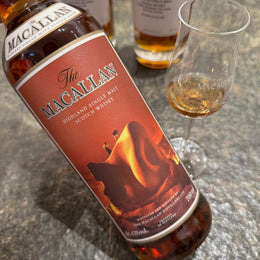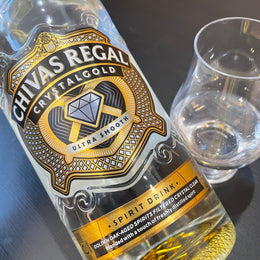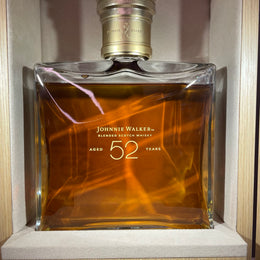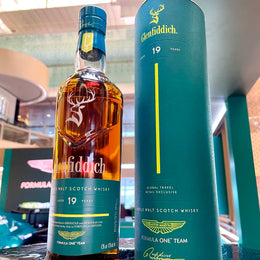Fruity and Spicy
Note: We have assigned every bottle we review to one of five Flavour Camps, based on the most dominant flavours found. The Flavour Camps are : (1) Fragrant and Floral, (2) Fruity and Spicy, (3) Malty and Dry, (4) Rich and Round and (5) Smokey and Peaty. To learn more about each Flavour Camp, please click here.
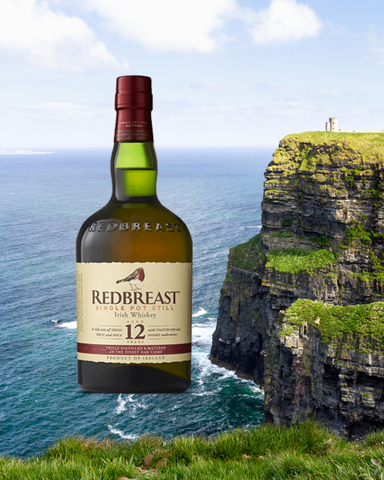
Hey Pandas, its time for another drink. Today, for those of you who are obsessed with the Peaky Blinders TV series (please don’t tell me you went so far as to get that haircut), we will be tasting the whiskey brand that is quite likely the favourite of the flat cap-wearing gangster extraordinaire, Thomas Shelby.

If you’re at a bar with a date who happens to ask you “What’s the difference between an Irish and a Scotch?”, impress her with your obscure knowledge of the history of Irish whiskey-makers and explain these three main differences:

(1) First, the spelling – and you may say “duh”. But the added “e” in Irish “whiskey” did not arise because of the Irish people’s funny accent. While the most expensive whiskies today are associated with Scotland, the Irish were– surprisingly- much more popular a few generations ago. During the early 19th century, Irish distilleries enjoyed great popularity and could be sold at a premium of many times a bottle of Scotch at the time. But then laws were changed and Scottish distillers were allowed to blend grain and single malts to create something spicier and more similar to the Irish stuff, Irish distilleries decided collectively refer to their spirit as “whiskey” as a means to distinguish their stuff from Scotch.
(2) Second, the ingredients. While Scottish “single malt” distilleries exclusively use malted barley, the Irish “single pot” style tends to involve malted barley, and a portion of ‘green’ unmalted barley. The unmalted barley adds a distinctive spicy overtone and silkier heavier texture not present in Scotch. Irish malt also tends to be completely unpeated, which makes the Irish whiskey taste cleaner.
(3) Third, the process. Notice the Redbreast’s “TRIPLE DISTILLED” label. After a fermented beer-like substance is made with yeast, an important penultimate step in the whisky-making process is its distillation to create the concentrated spirit (that is then matured into whisky). This happens in a giant kettle with a long neck that collects alcohol vapours and other aromatic flavonoids and volatile oils into a separate container. While the Scottish tend to conduct distillation twice, the Irish tend to do so three times too make their whiskey sweeter, with a texture that is lighter and smoother. I have heard of claims that Irish whiskey is less likely to result in a hangover because the extra distillation removes hangover-inducing compounds, including esters, tannins and other stuff that belong in a chemistry class.
Back in the early 1900s, ice in beverage was a fanciful luxury for working-class Englishmen. Spirits had to be drunk neat. Thomas Shelby is said to prefer Irish to Scotch, but did not explain his preference. I reckon that he, like the rest of his working-class compatriots in Birmingham, would certainly opt for the lighter and smoother tasting triple-distilled Irish whiskey- of which, the Redbreast has been consistently and highly regarded as the most iconic and best whiskey to capture the Irish character.
Now that your date has been lulled to sleep, we turn to the whiskey at hand.
In the glass, the whiskey is a deep amber indicative of a long sherry maturation.
On the nose, the whiskey leads with moderate vanilla with lightly toasted almonds and walnuts. This develops into a clean sweet fragrance of Sherried fruits, such as raisins and cranberries. There is a slight floral fragrance and fresh cut grass.
On my tasting, a surprisingly sweet first act, with vanilla, cereal and honey-roasted almonds, with growing notes of caramelized apple. The sweet malty notes are very very clean and crisp, indeed true to its Irish triple-distilled character.
In the midst of it, some sherry and spice grow on my palate, although it felt rather subtle because my attention was focused on the sweet and light malt. Once I caught notes of some dark fruits, I do realise the “sherry undertones” advertised on the label are indeed present and further sips draw me closer. There is a flavourful but well-rounded sherry note with raisins, cranberries, hawthorn candy flakes (山楂) and a bit of woodiness from the toasted barrel. Very very slight leatheriness and spice accompany the dry fruits. The texture is velvety and lovely, and I really like the marriage of equals between the clean and sweet vanilla flavours on one hand and sherry notes and spice on the other. Neither profile overwhelms the other, which leaves me to be able to enjoy both.
The finish is long, with raisins and hawthorn candy, and warming ginger spice. While the flavours are light and crisp, the texture is not just smooth but somewhat creamier and more velvety than Scottish single malt- perhaps I am thinking too much but I would attribute this difference to the unmalted barley used for Irish.
My Take
This is a great bottle at its price range – it is a rather straightforward flavour profile of vanilla and sherry sweetness that may be said to be tried and tested to be widely popular with all folks. It is also very flavourful considering its 40.0% ABV.
Our Rating |
💈
One barber pole because drinking this might make you want to get the Peaky Blinders' haircut.
|
Anyone who enjoys Christmas cake with dried fruits, or toasted raisin buns would enjoy this, and a simple man like me certainly does. At its price range, I would recommend any alcoholic to include the Redbreast 12 in his personal collection as a go-to drink, and if not, as something for his friends who are just beginning to drink whisky (or whiskey).

@charsiucharlie



